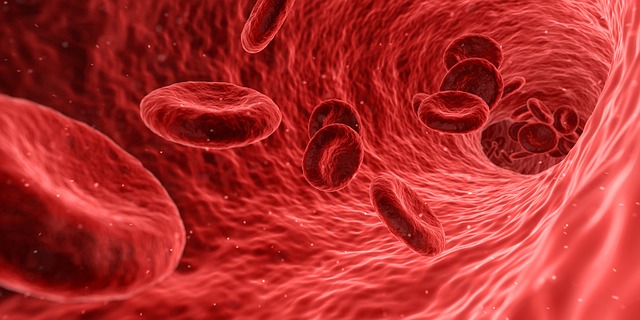EPJ E Highlight - How red blood cells behave in crowded vessels
- Details
- Published on 26 April 2019

A new model of red blood flowing through narrow capillaries shows that the cells change shape and alignment, allowing plasma to flow down the sides
Blood consists of a suspension of cells and other components in plasma, including red blood cells, which give it its red colour. When blood flows through the narrowest vessels in the body, known as the capillaries, the interactions between the cells become much more important. In a new study published in EPJ E, a team of researchers led by Ignacio Pagonabarraga from the University of Barcelona, Spain, has now developed a mathematical model of how red blood cells flow in narrow, crowded vessels. This could help design more precise methods for intravenous drug delivery, as well as 'microfluidic chips' incorporating artificial capillaries, which could offer faster, simpler and more precise blood-based diagnoses.
Pagonabarraga and his colleagues developed a model of red blood cells, which, as has been observed through the microscope, have slightly elastic walls, and are suspended in plasma with a force introduced to prevent contact between the cells. They also modelled various concentrations of cells flowing through channels two to three times wider in diameter than the cells themselves, which is typical of or slightly larger than the diameter of a capillary.
The group found that their cells tended to form a characteristic, 'slipper-like' shape, particularly at higher concentrations. Furthermore, in crowded conditions, when the viscosity of the suspension is greater than the surface tension between the fluid and the cell walls, the cells tended to align in the centre of the channel, allowing the liquid plasma to flow freely along the sides of the vessels. The design of both novel drug delivery devices and diagnostic 'labs-on-a-chip' could be facilitated by a deeper understanding of the mechanism of blood flow in capillaries; Pagonabarraga's model represents an important step in this direction.
Lazaro, G.R., Hernandez-Machado, A. and Pagonabarraga, I. (2019), Collective behaviour of red blood cells in confined channels, Eur. Phys. J. E 42:46. DOI 10.1140/epje/i2019-11805-0




